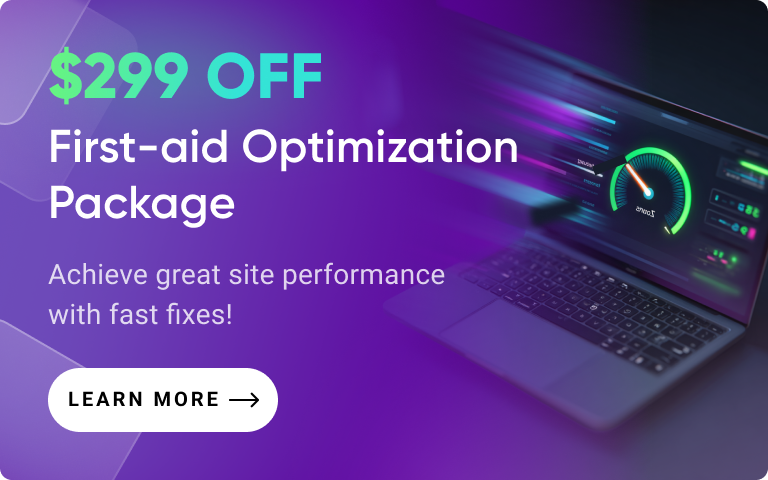How much a Magento website costs is a common question when preparing to launch your e-commerce store on the Magento platform. As you budget your technology investment, you want to make the most of what Magento can offer your online business.
Magento pricing has a flexible structure to fit the needs of your business. However, many businesses fail to take into account the true cost of running a website, which can be much higher than they initially expect. All because choosing between the cost of Magento editions, features, and extensions, POS costs, as well as Magento pricing models can be confusing.
This article examines the Magento costs and offers insights on how to use the Magento pricing structure to benefit your business. We've put together the key Magento e-commerce pricing figures for licenses, themes, hosting, extensions, maintenance, custom development, and more. We hope that after reading this guide, you can decide which is best for your e-commerce store.
Elements that Influence Magento Pricing

Magento is a flexible e-commerce platform that offers a variety of pricing options to suit the needs of businesses of all sizes.
The following elements can affect Magento price:
1. The license type
2. The business size
3. The number of products
4. The number of users
5. The level of support
Considering all these factors, your business can make informed decisions about which Magento pricing plans and features to purchase.
Read More: Magento - The State of the Platform Today
Magento Prices: A Detailed Overview
License versions
There are three versions of the Magento e-commerce platform. So when we're talking about Magento costs, we should talk about the costs of Magento Open Source, Magento Commerce Cloud (Adobe Commerce Cloud), as well as Magento Commerce pricing (I.e. Adobe Commerce pricing) separately.
- Magento Open Source is the free community web Magento edition and has no license cost. Basically, this is the free Magento version.
- Magento Commerce pricing starts at $22,000 annually.
- Magento Commerce Cloud is the most expensive option, starting at an annual cost of $40,000. This version offers highly optimized codes, exclusive features, and automated and managed hosting.
Tip: Although Magento Open Source has no upfront license cost, plan your budget to include future expenses associated with building your e-commerce store and making it live. These costs include purchasing a domain, buying one of the Magento hosting plans, implementing the design and developing your website. Plan more than $15,000 total for these additional costs.

Magento hosting pricing
Magento hosting providers offer a variety of hosting plans optimized for Magento performance. The resulting cost will depend on your website's specific needs and choice of Magento plans. You will need to have purchased a domain name before selecting a hosting plan.
While Magento hosting plans start at around $10 per month, more comprehensive Magento hosting costs approximately $50 per month.
However, if you have a large Magento site or are expecting a lot of traffic, you may need to select a more expensive hosting plan that offers more resources. You’ll pay about $300 per month for the most popular plan and over $850 per month for the most expensive plan.
One exception to hosting costs relates to the Magento Commerce Cloud. This version includes managed services and hosting in the license itself and does not require a monthly subscription.
Managed Magento hosting plans offer a variety of features that can help you run your online store more efficiently.
Here are some features you can expect:
1. Scalability: Managed Magento hosting plans have a scalable design, so you can easily add more resources as your business grows.
2. Security: With managed Magento hosting, you can rest assured that your store is secure from hackers and other online threats.
3. Backup and recovery: If something goes wrong with your store, managed Magento hosting plans include backup and recovery services to help you get back up and running quickly.
4. 24/7 support: Managed Magento hosting plans come with 24/7 support from experienced professionals.
5. Money-back guarantee: Most managed Magento hosting providers offer a money-back guarantee, allowing you to try it risk-free.
Additional features include Elasticsearch for M2.4+, unlimited email, and free SSL.
Read more: Best Magento Hosting Providers

Magento themes pricing
The cost of a custom Magento theme can vary depending on the specific design and features you need. While Magento offers free themes, you can expect to spend around $200 on a quality Magento theme.
If you're looking for a more custom or unique design, you may need to spend closer to $500 or even $1,000. But remember, a quality Magento theme is an investment that will pay off in the long run by helping you drive more traffic and sales to your online store.
Many online e-commerce owners now choose to develop a custom Hyvä Magento theme because of its high performance and excellent user experience.
Read more: The Benefits of Hyvä Themes

Custom Magento development costs
Magento web design costs can vary depending on the size and complexity of your project. A simple Magento website can cost around $2,500 to design and develop, while a more complex website can cost upwards of $10,000.
If you want a Magento website to be designed and developed, it's important to work with a reputable agency with Magento experience. This will ensure that your website is built to your specific requirements and that it functions properly.
When considering the cost of a Magento web design project, be sure to factor in the ongoing costs of hosting and maintaining your website. Magento websites require regular updates and security patches, so it's important to budget for these costs when deciding to build a Magento website.
Read More: E-commerce Website Development Costs

Magento site maintenance
Along with Magento’s many features and flexibility to businesses comes the responsibility of maintaining the site and keeping it running smoothly.
Magento can be expensive to maintain. Depending on your Magento site size and complexity, the maintenance cost can range from a few hundred to a thousand dollars per month.
Here are some tips on how to keep your Magento maintenance cost down and ensure your site runs smoothly.
1. Keep your site updated. Magento releases new versions with security updates and bug fixes regularly. Keeping your site up-to-date will help keep your maintenance costs down, as you won’t need to pay for fixes for old versions.
2. Use a reliable hosting provider. A good hosting provider will save you time and money in the long run. It keeps your site running smoothly and helps you with any technical issues.
3. Hire an outsourced team. Outsourcing Magento maintenance and delegating it to a separate team can be more cost-effective for large e-commerce stores or businesses with no internal IT department.
4. Use caching and compression. Caching can help improve your site’s performance, and compression can reduce the size of your pages, both of which will help reduce your maintenance costs.
5. Optimize your images. Large images can slow down your site and increase your bandwidth usage.
6. Use a content delivery network (CDN). A CDN can help deliver your content faster and reduce bandwidth usage and maintenance costs.

Costs of Magento e-commerce platform extensions
You'll need to install a plugin or an extension if you want to add extra functionality to your Magento store. Magento extensions are add-ons that can give your store new features or improve existing ones.
There are two types of Magento extensions.
- Official Magento Extensions: The Magento team or verified Magento partners offer extensions that vary in price from the Magento Marketplace.
- Community-Created Magento Extensions: Independent developers create these extensions, which are available for free or for purchase from third-party websites.
Magento offers a few free extensions. The majority of the high-quality and advanced extensions require a one-time fee. While the cost can start at $50, most come with a hefty price tag of up to $500.
For example, the popular Magento extension, MageWorx Multi Fees, costs $129 for the basic version. The premium version, which includes all the features, costs $229.
Another popular Magento extension, Amasty Special Promotions Pro, costs $149 for a single site license. If you want to use the extension on multiple sites, you’ll have to pay $349.
While big businesses may easily afford to pay $129 or $149 for an extension, small businesses, startups, and entrepreneurs may need help to stretch their budgets. Some cheaper Magento extensions are available, but they’re usually not as good as the expensive ones.
So, if you’re looking for a high-quality Magento extension, be prepared to pay a premium price.

Magento's default Payment Processor
One way to reduce costs is to choose a payment provider that doesn't charge fees. Magento’s default payment processor is an excellent option if you're just starting with the platform. It's easy to use and already set up for you. Plus, it's free to use.
The most popular e-commerce payment solutions are Stripe, Authorize.net, and PayPal. While these payment service providers require no setup cost, the transaction fee is about 3%.

Additional Magento e-commerce pricing: SEO & marketing
Magento also offers a number of marketing and SEO (Search Engine Optimization) tools to help businesses promote and optimize their online store.
The cost of Magento SEO and marketing can vary depending on the size and scope of the project. For small businesses, these costs can be as low as a few hundred dollars per month. However, for large businesses, the cost can be several thousand dollars per month.

Summing up
If you are looking for a reliable, flexible e-commerce platform that won’t break the bank, Magento could be the answer. With its user-friendly interface and range of features, Magento is an excellent choice for businesses of all sizes. The cost of a Magento website can vary significantly depending on the size and complexity of the website:
- A small business with a limited product range may be able to get by with a simple Magento installation especially if they are using Magento Commerce and skipping Magento Open Source with the free license because the start-up costs of Magento hosting, development, and customization will even out the difference. Usually, Magento small business pricing starts from $200 per month.
- A larger business with a wider range of products may require extensive customization and development work, so they should plan it and opt for robust licensing to avoid additional hosting and service fees. Such advanced Magento pricing starts at $2,000 per month.
Careful planning and consideration of all the components we've discussed above can be your starting point. While the initial setup cost of a Magento website can be higher than other platforms, its scalability means it will be a wise investment in the long run.
Investing more resources into a robust system from the start means you're getting a well-designed and well-maintained website. When you don't need to tweak every small thing and continue pouring out money to put out fires, you can concentrate on growing your business instead.
Frequently asked questions
Magento comes in two editions: Magento Open Source (formerly Community Edition), which is free, and Magento Commerce (formerly Enterprise Edition), which is a paid version with additional features and support.
Magento Open Source is free to use. However, Magento Commerce is a paid solution, and the cost depends on factors such as business size, requirements, and support level. Magento Commerce pricing usually starts at $22,000 for on-premises and $40,000 for Cloud edition (costs are annual).
Magento Commerce does not have a fixed, one-size-fits-all pricing structure. The cost depends on various factors such as the size and needs of the business, the chosen edition, and the level of support required. Magento Commerce pricing usually starts at $22,000 for on-premises and $40,000 for Cloud edition (costs are annual).
Magento Open Source is free, but Magento Commerce is a paid solution, and its pricing is not typically presented as a monthly subscription. Costs for Magento Commerce depend on factors like business size and specific requirements, and the pricing model involves an annual license fee.
The costs of running a Magento website include hosting, domain registration, security measures, development, and potential third-party extensions. Magento Commerce involves additional licensing fees. Hosting costs can vary based on the chosen provider and plan. Small businesses may spend a few hundred dollars monthly, while larger enterprises with complex requirements might invest significantly more.
Magento Commerce comes with advanced features, scalability, and dedicated support, making it suitable for large and complex e-commerce businesses. The cost includes these premium offerings, such as enhanced security, performance optimization, and exclusive features. Businesses willing to invest in a robust and scalable e-commerce platform may find the added value justifying the expense.


























